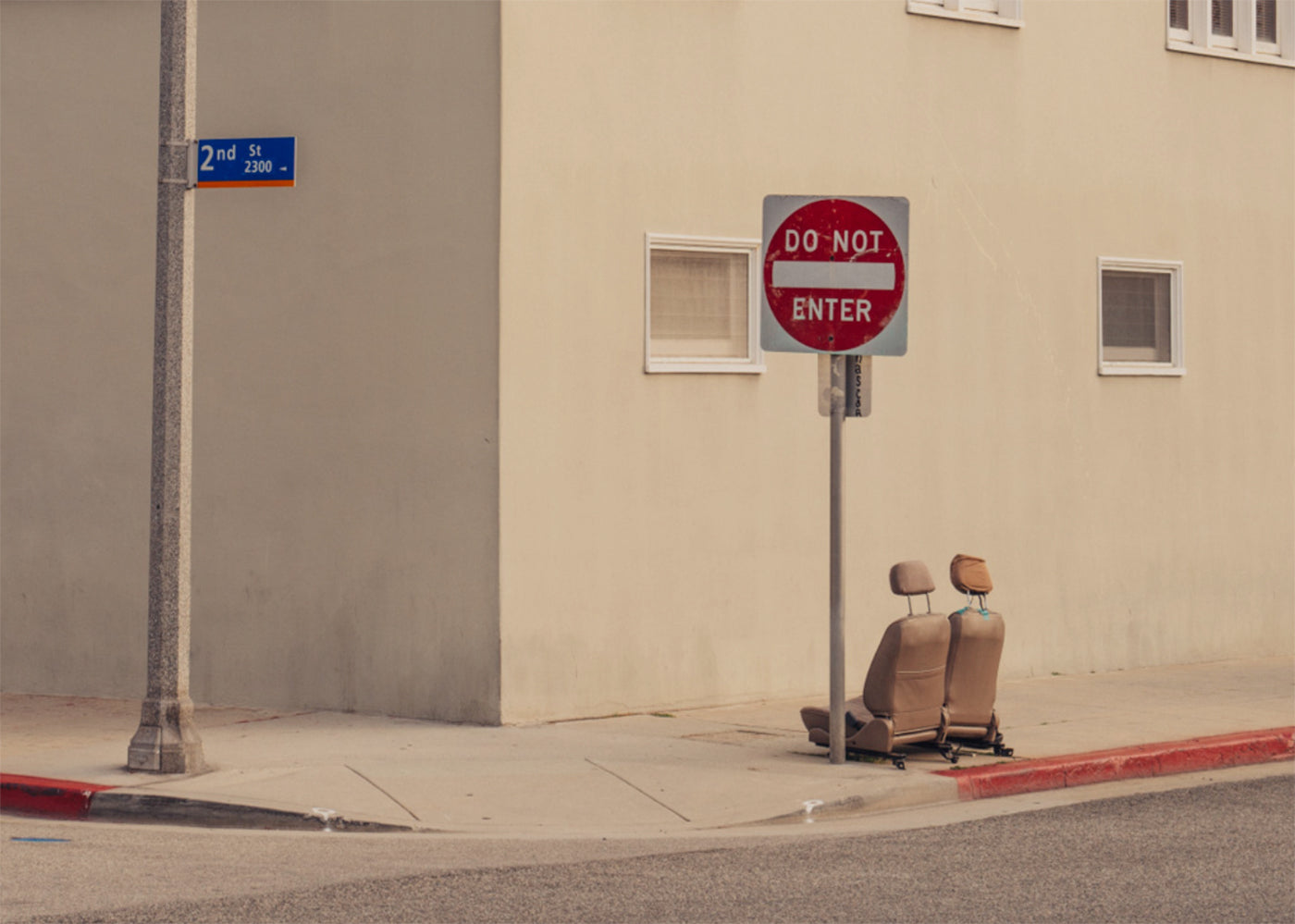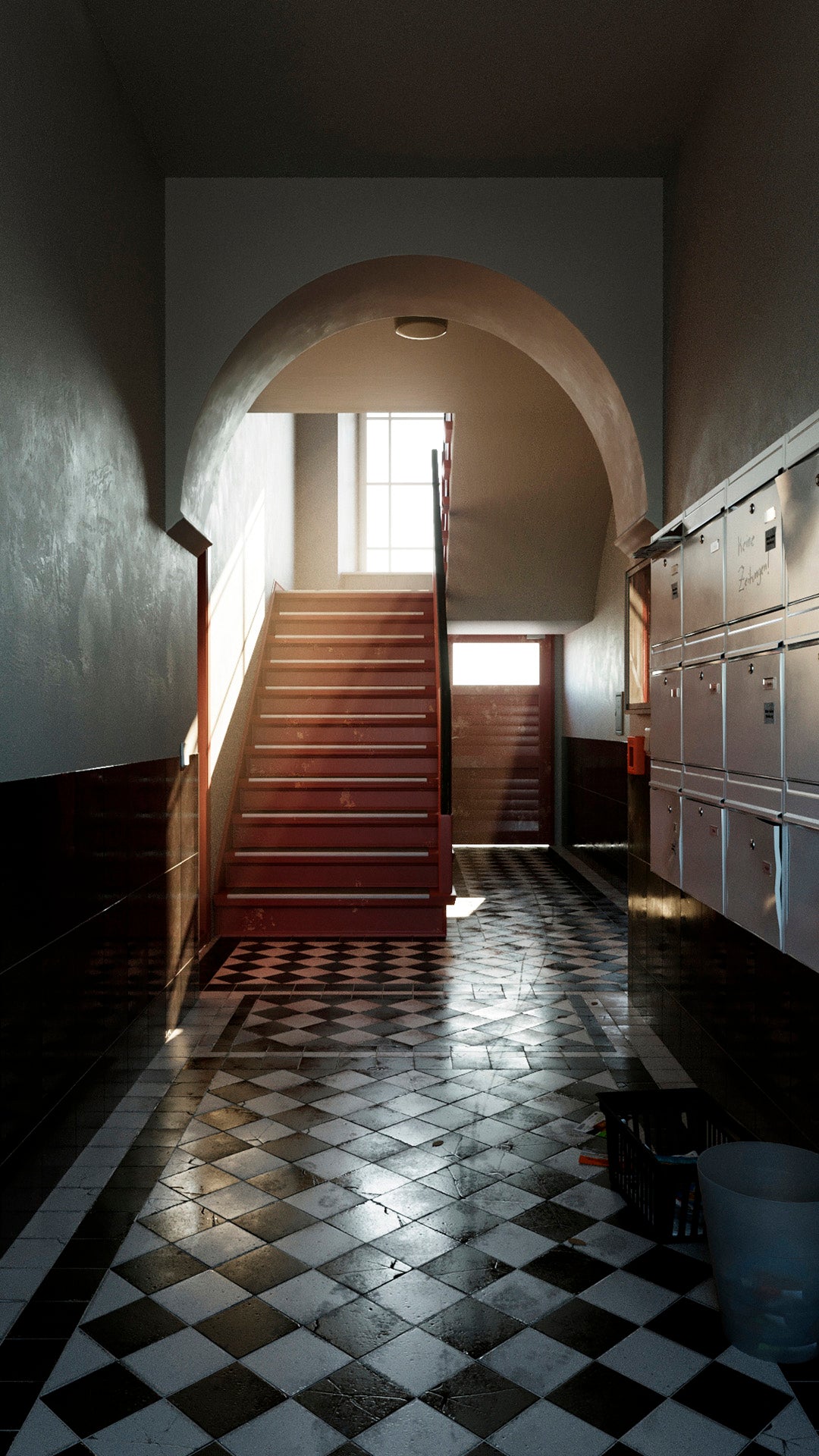
A Real or Rendered Berlin Hallway?
A fictitious Prenzlauer Berg hallway so real that the ‘Bitte Keine Werbung’ sign has been ignored
The light as it rebounds off the green tiles, the newspaper glistening as it poises from the mailbox, the tire marks left on the ground by a bicycle, everything about this unreal hallway has been captured in such detail to make it lifelike. Berlin-based digital artist Julius Hahmann discusses going deeper into detail and creating a parallel digital world.
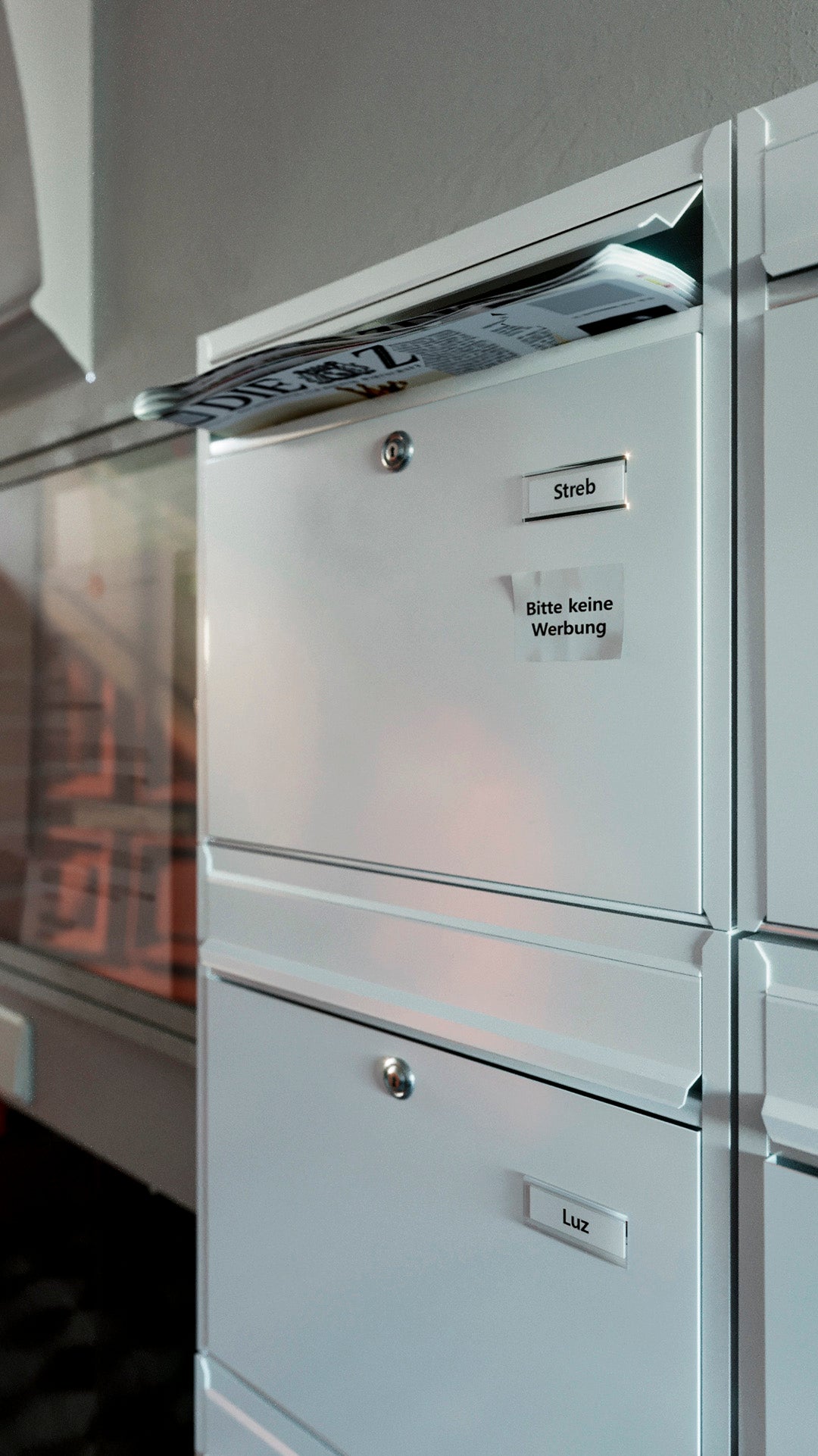
One of the hardest challenges for Hahmann was recreating the glossy mailbox with the glowing daylight shining onto it, he took endless amounts of pictures to capture every inch of detail possible.
An architect graduate originally from São Paulo, Hahmann worked in Brazilian bureaucratic offices for years drawing blueprints for designs he disliked. He later discovered his passion after moving to an advertising agency called Studio Firma, where he was in charge of recreating all of their campaigns in 3D. Briefed to model unique objects for clients, it was here where he sussed out his calling. Given space to explore his digital desires, he dedicated himself to refining his modeling skills and giving extra personality to his creations. "In my opinion, art is a reflection of the artist's personality. Once the artist knows himself deeply, he will transmit his essence through his work," Hahmann tells us.
This turned out to be his last position before moving to Germany. Shortly after arriving he hit a creative roadblock for his next project until he found stimulus in the mundane existence of his Prenzlauer Berg hallway. Using Blender to model and 3Ds Max with Corona to render, his creation is so uncanny that it would convince anyone at first sight.

The casual wear and tear of his building's stairway entrance show how the paint has disappeared over time, the damage likely caused by objects banging onto the steps has grown to become prominent, and the morning light seeping onto the adjacent wall.
What possessed you to recreate a render of your Berlin building?
This year I’ve been doing many small projects, just to keep studying and learning, focusing on low poly models to improve my model skills. But, at some point, I encountered a creative block, I had no idea what else to do. I knew it was time to try something rigorous and more realistic.
I've been living here for over a year and I walk through this hallway every day. One thing I always loved was the lighting. It’s quite dark at night, but when the morning light comes in, it creates such a beautiful atmosphere, which made me think: “There are so many things in this space that I could create in 3D.” It was an excellent challenge for me, modeling, texturing, composition, and lighting, everything was there. My main goal was to recreate the same feeling I experience when walking through the main door.
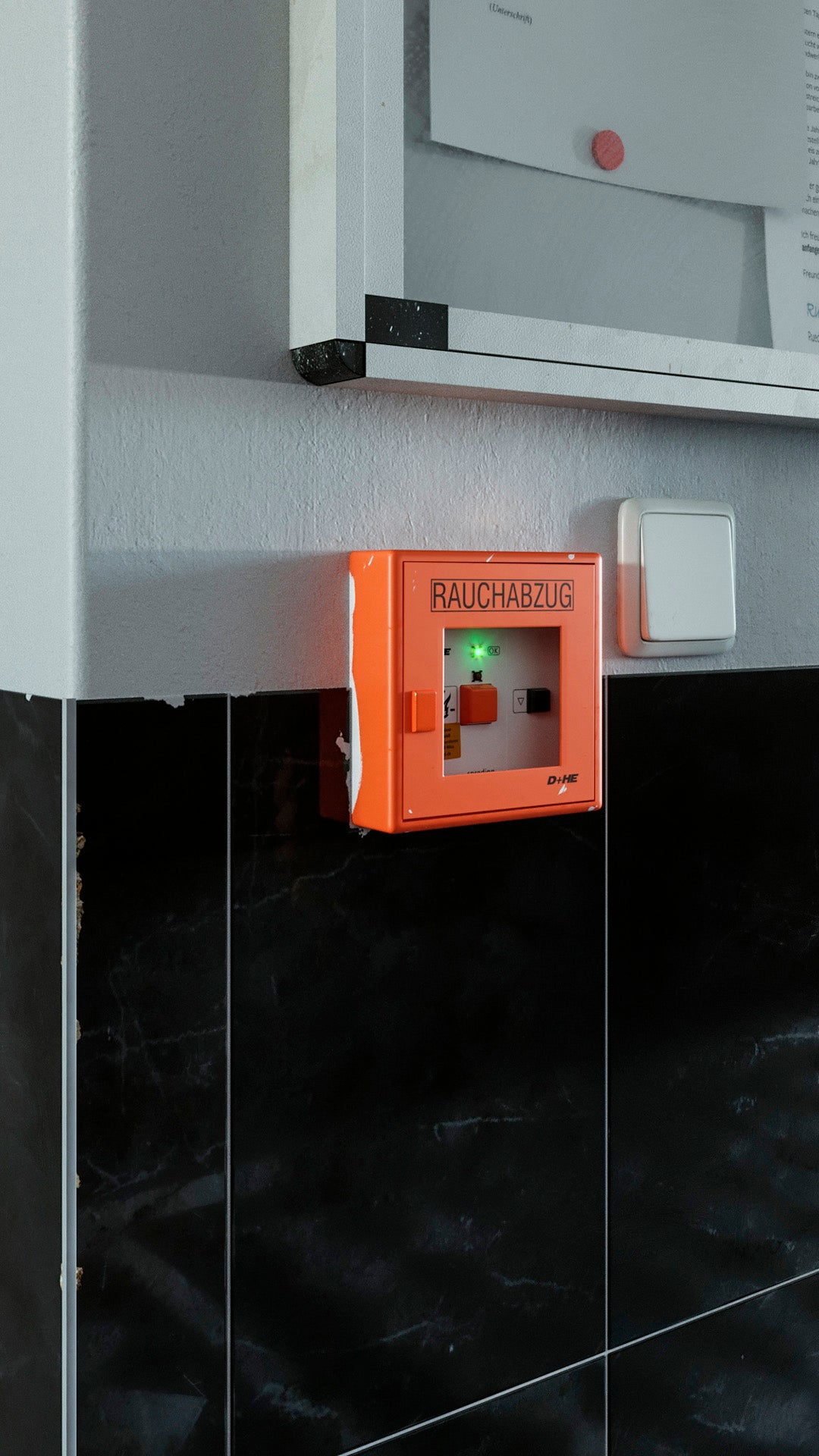
The Rauchabzug, which translates to the 'Flue,' is an essential element of preventive fire protection and personal protection in Germany. His recreation even captures the flashing light to show the system is active.
How long did the process take and which were the hardest parts?
It took two months because I wanted to be precise. I was looking at the door paint and thinking: “What else can I do to make my renders look realistic?” Neighbors must have thought I was crazy, looking so closely at everything there. I think this was the hardest part, to know what to bring to the scene to make it look real. Sometimes, when we have a deadline or a lot of jobs to do, it's normal to use a simple model or a simple texture, but I wanted to go deeper into those aspects. The mailbox, for example, was challenging. It is a white material with a glossy reflection, but I knew that if I just did this, it would look fake. This is why I took a lot of photos of that mailbox, trying to understand how I could make that simple material look realistic.
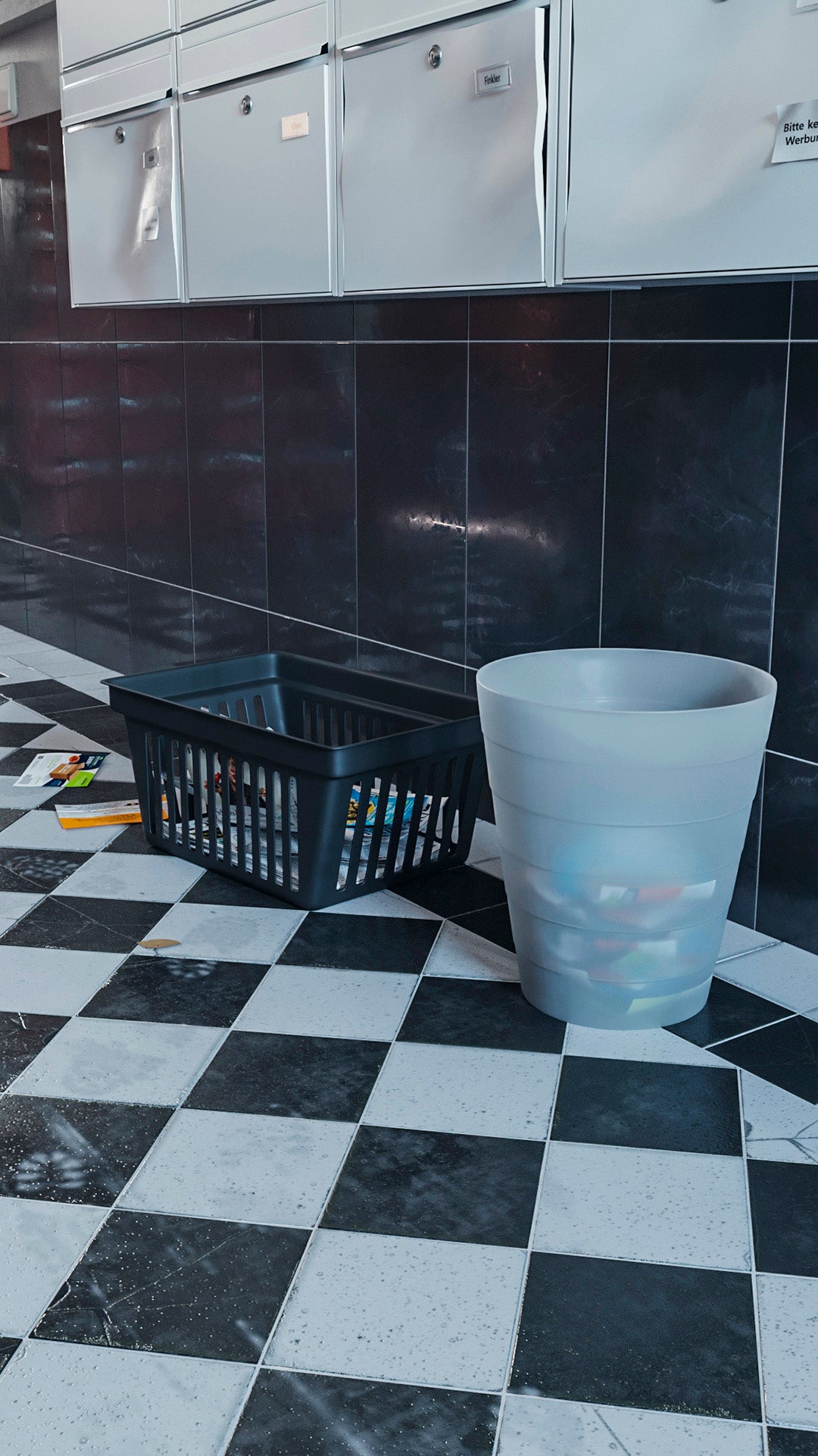
A newspaper with Chancellor Angela Merkel creeping through the plastic box, leaflets for fast-food takeaways, and marks of the outside world like dusty shoe imprints and leaves add that extra level of personality to the hallway.
Your attention to detail is exceptional, what is the most crucial aspect, to bring personality and life into scenes?
Details are everywhere on every scale and they are the key to bring life to the scene. If you want to do so, you need to bring life to every single object. It's really important to understand how life itself changed that object. If it was scratched, if it has some fingerprints, if it’s dusty or not, how it was painted, etc.
Another thing that makes a difference and can give a sense of realism to the scene is the background. For example, if you take a photo of your room, what do you see? It probably shows a lot of your personality and your lifestyle, even if someone that doesn't know you sees that picture. So it's really important to keep this in mind when you're trying to give personality to a scene. Tell a story, add details that people will see and realize the place has a story.
Step into a world of digital and physical design through some of our classic titles

